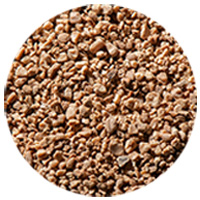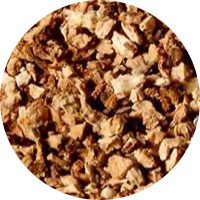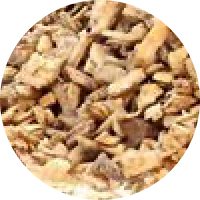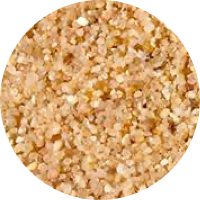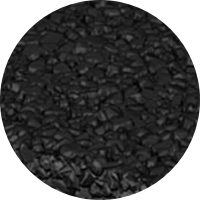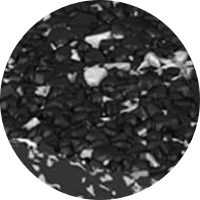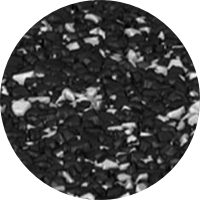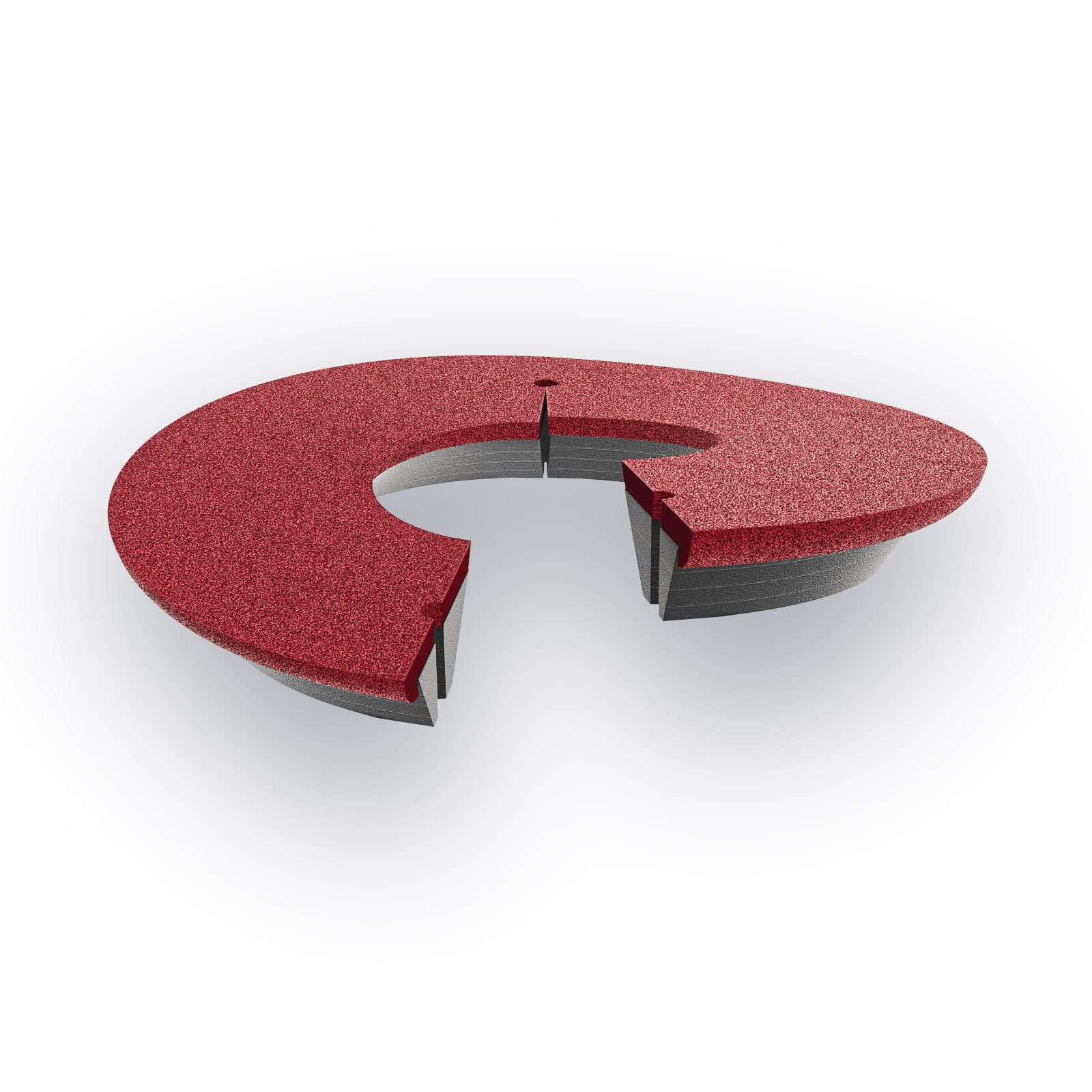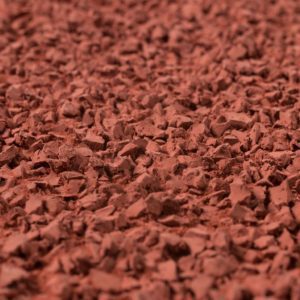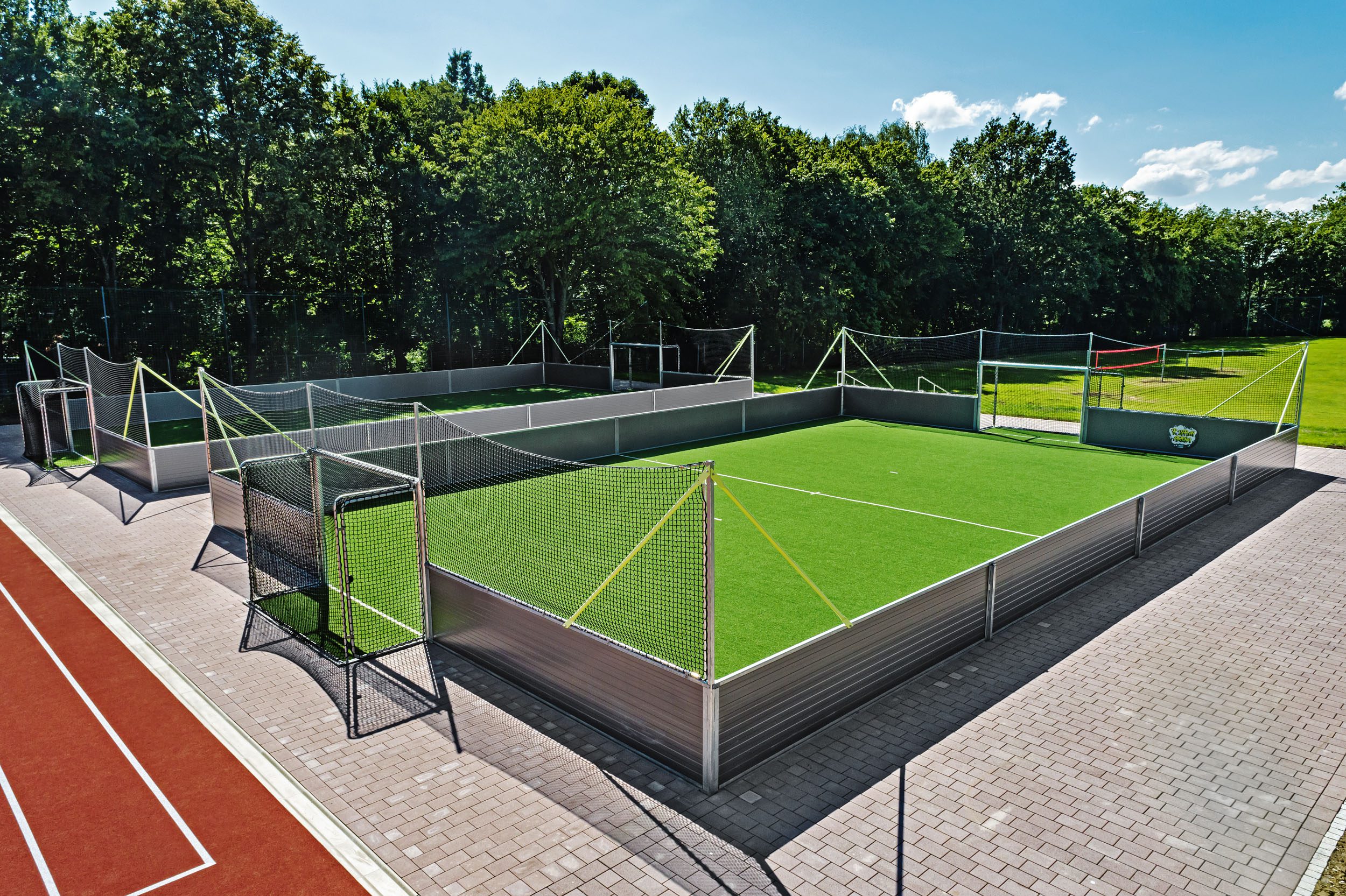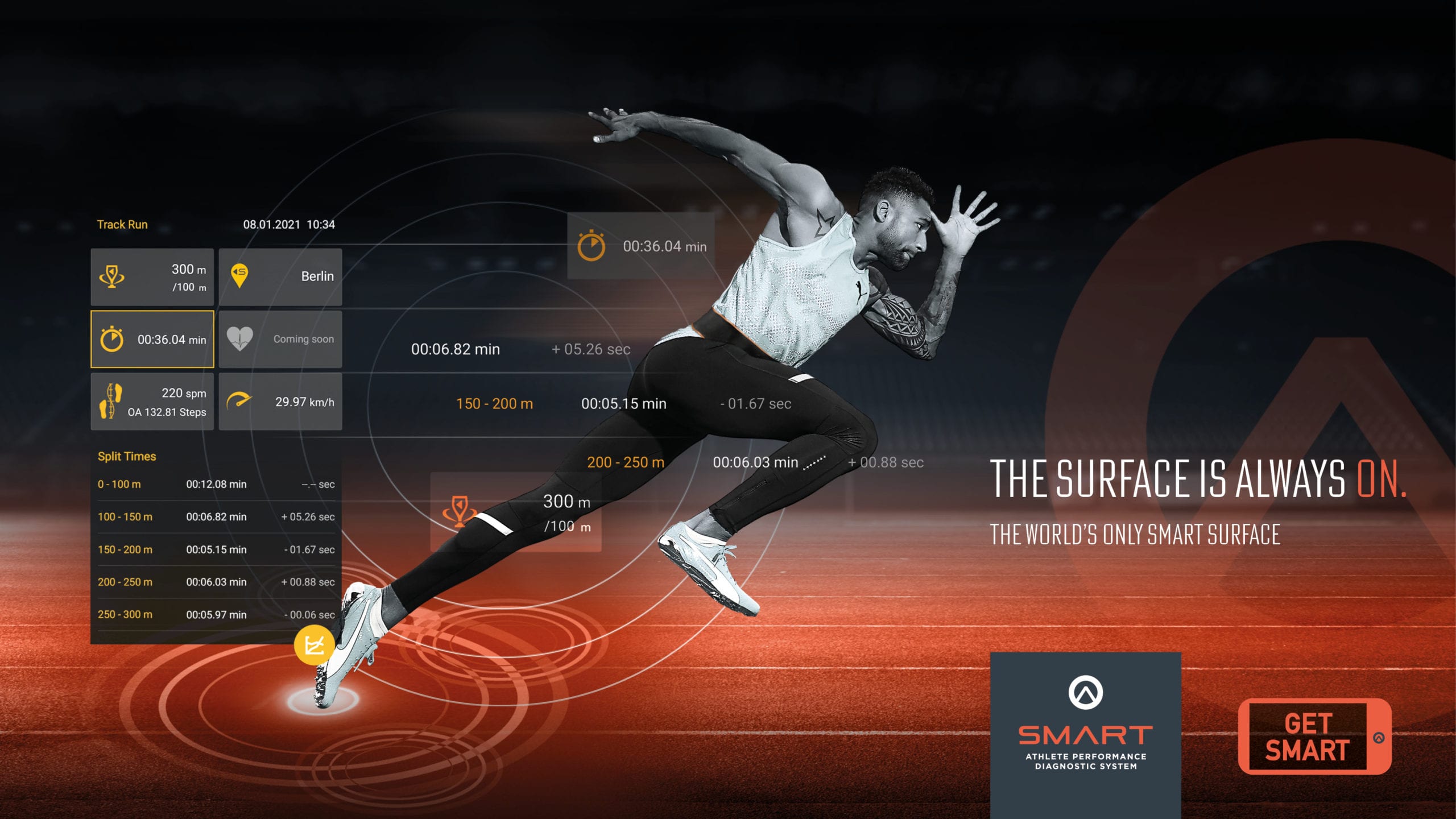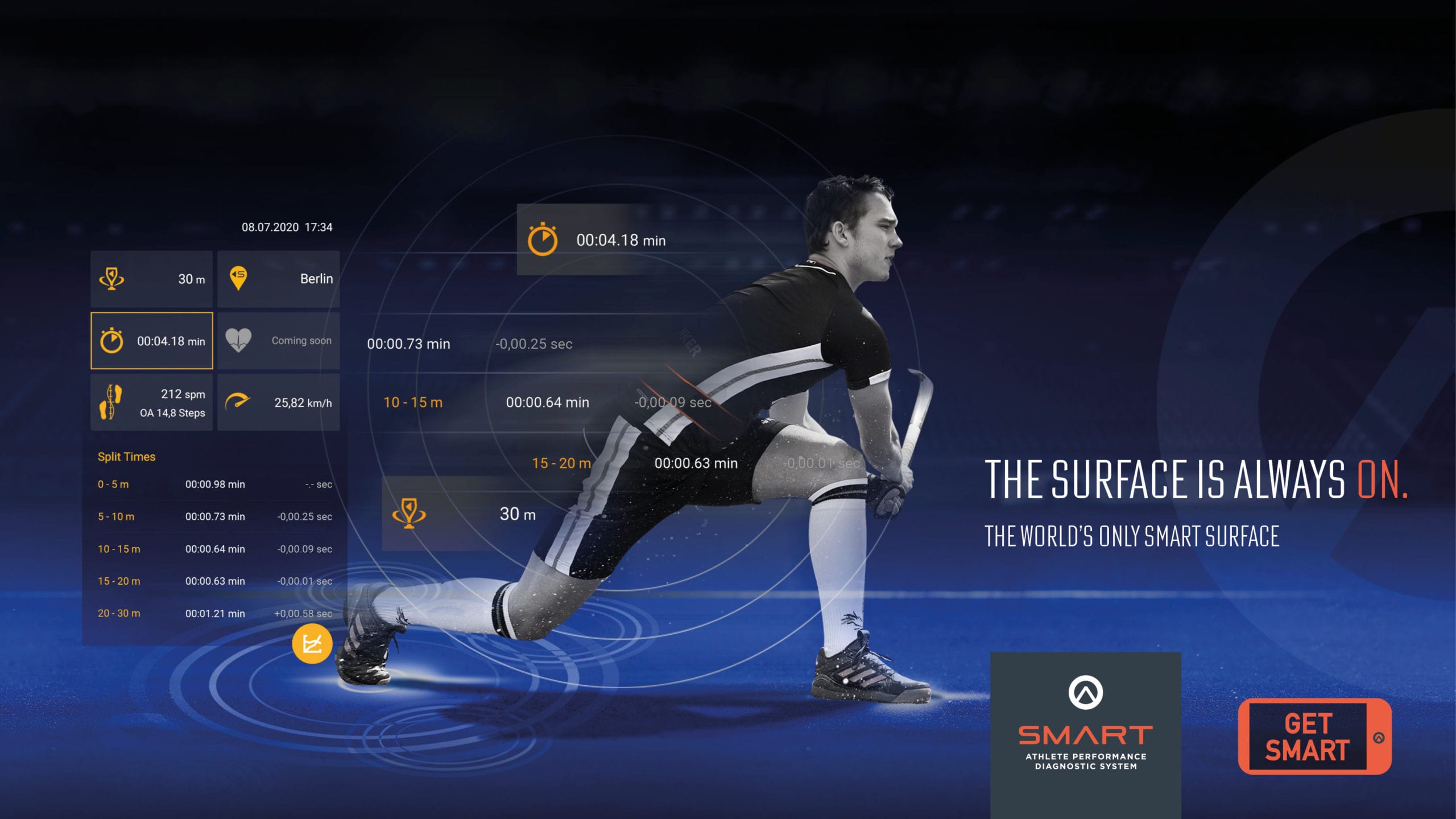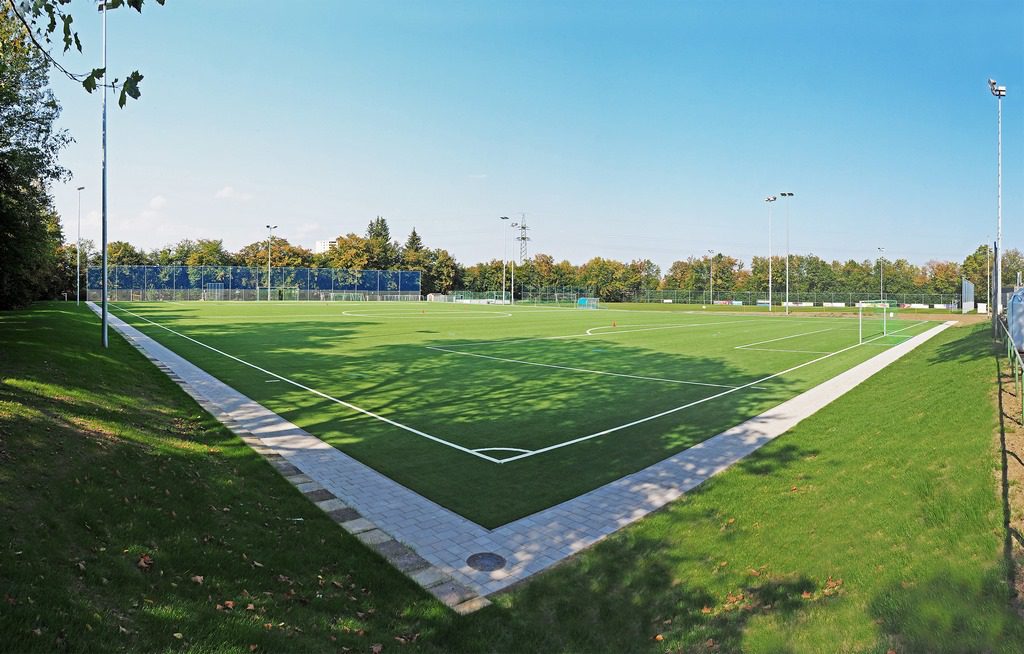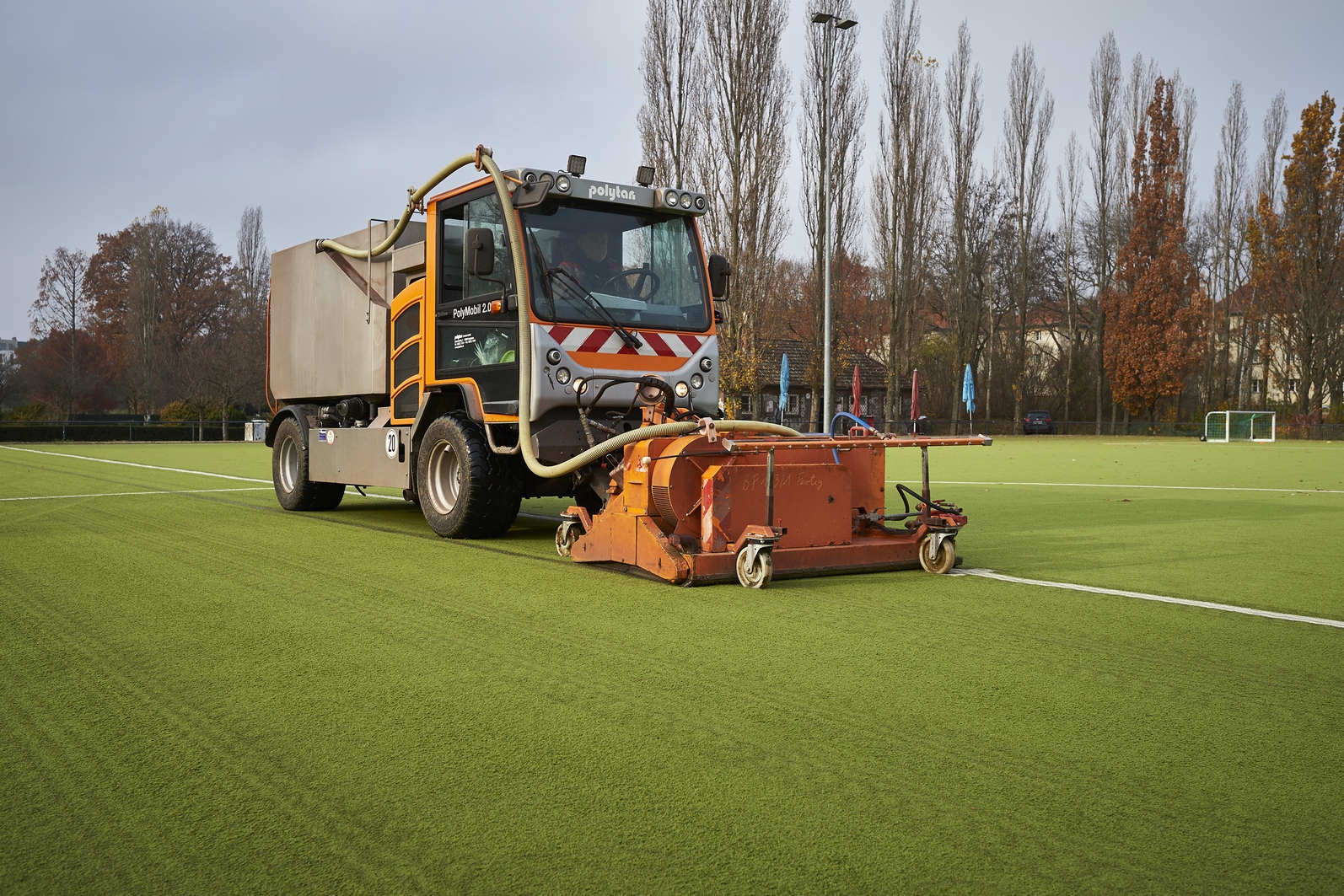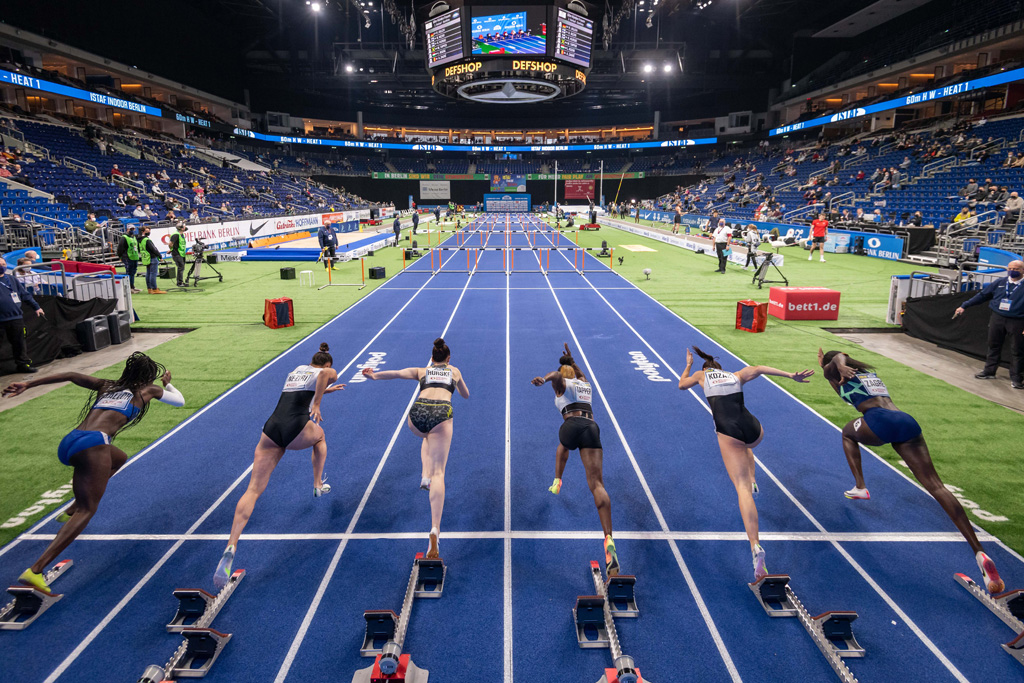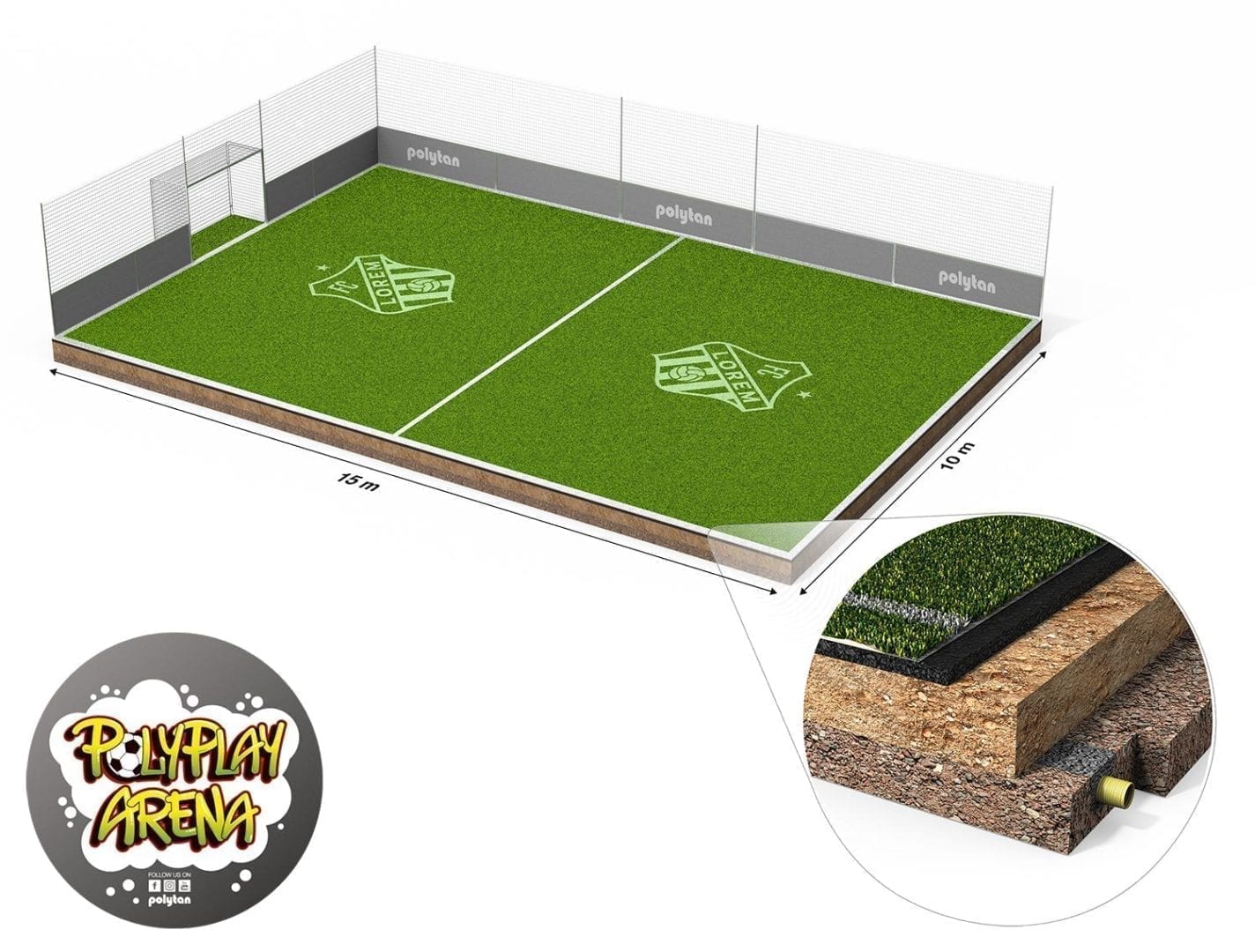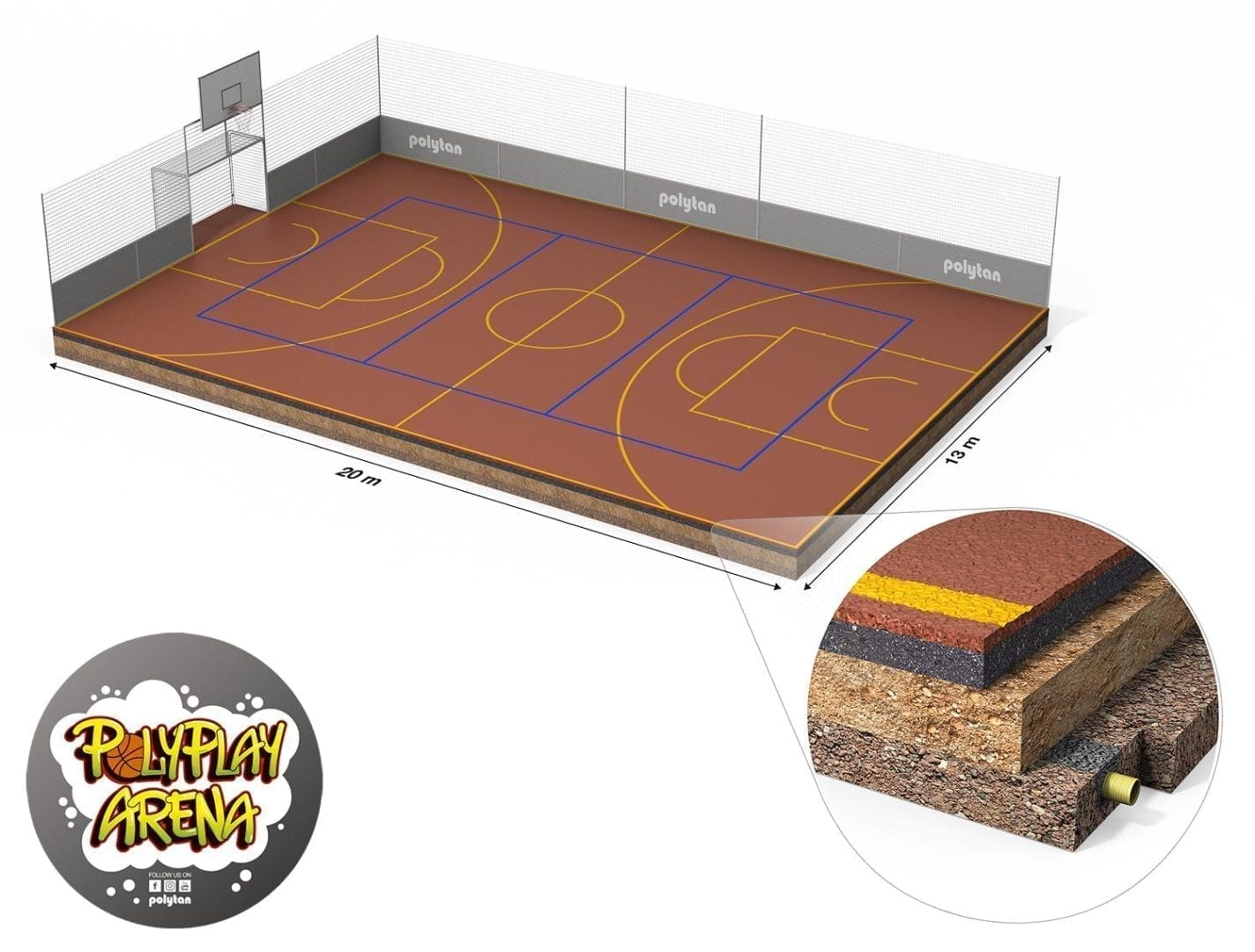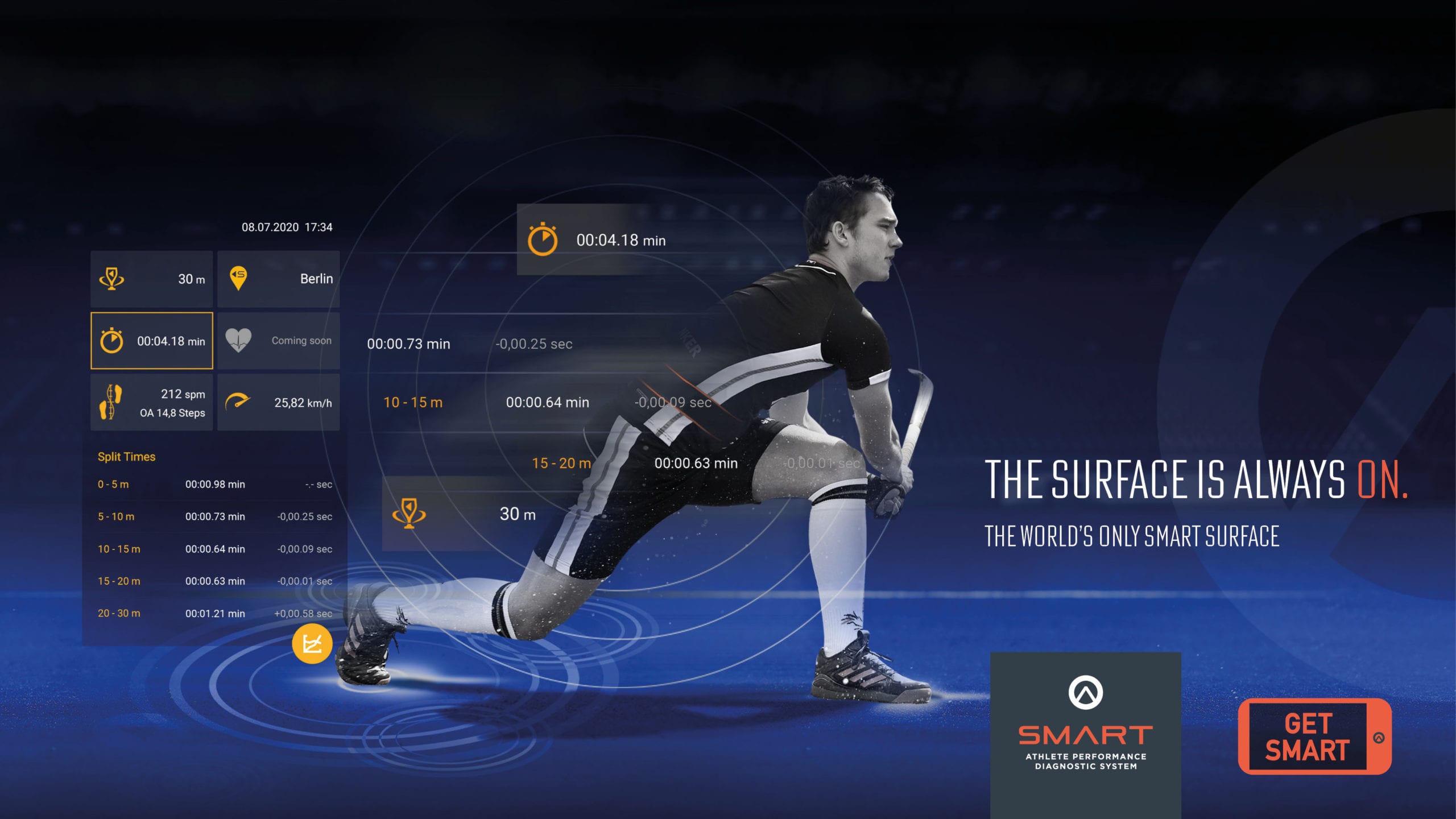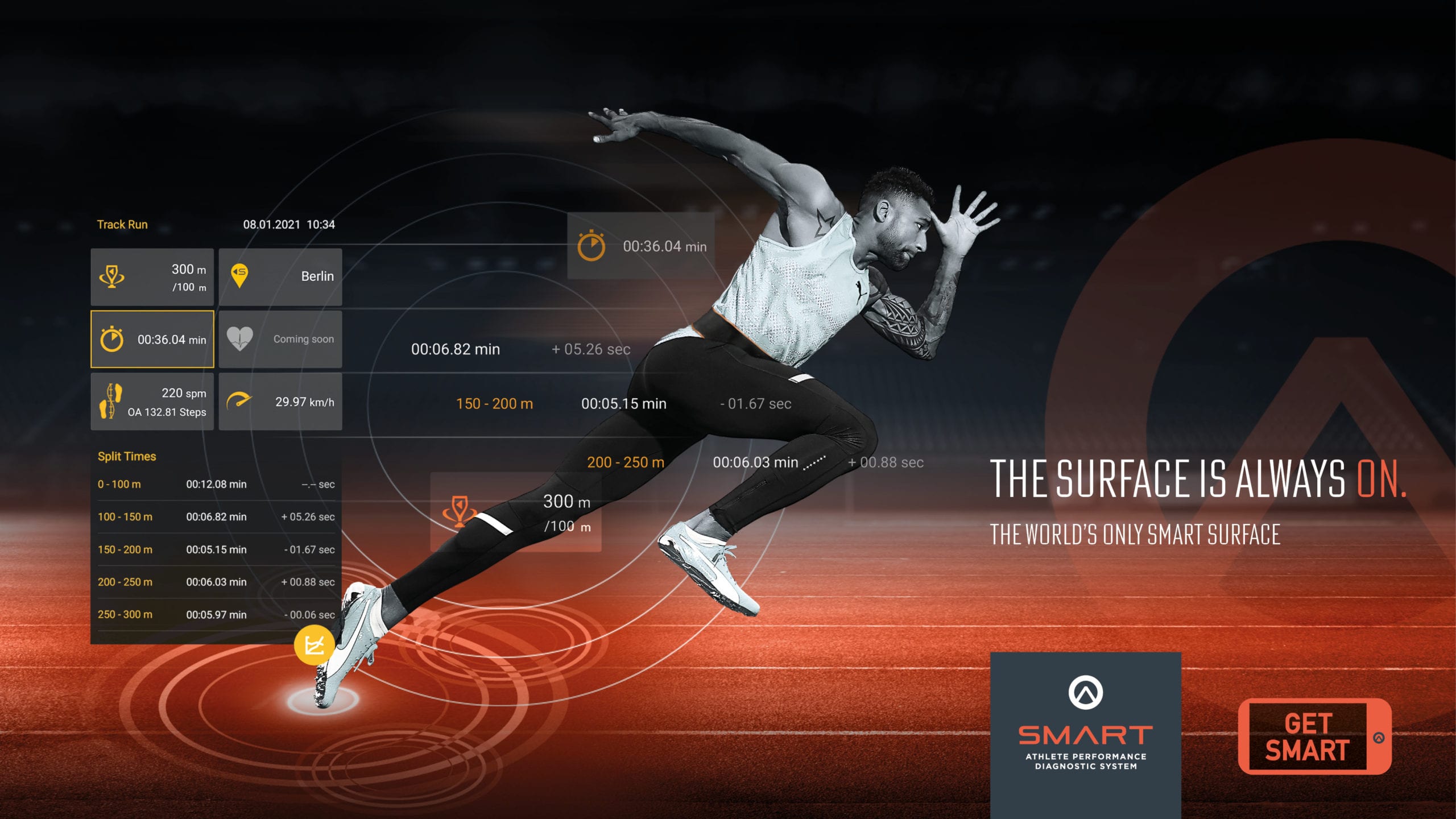Youth coach Jörg Steinegger from TSV Betzingen on the advantages of synthetic turf and the benefits of outdoor sports halls
We are happy to explain the different Polytan products, their features and benefits to our customers. In our reference reports, we illustrate how they are used and for what purpose. Today, we would like to let Jörg Steinegger share his views. He is someone who has been closely involved with the topic of synthetic turf for many years, given his role at the TSV Betzingen club in the Swabian town of Reutlingen.
He shares his “practical advice for practical purposes”, explaining
• what a synthetic turf means from the point of view of clubs and communities,
• how Betzingen has managed their synthetic turf projects thus far,
• what economic benefits are offered by a synthetic turf,
• why he believes outdoor sports halls are the future
The former imperial city of Reutlingen has a lot to offer, especially in terms of sports. This undoubtedly includes the SSV Reutlingen football club, which has made it all the way to the second Bundesliga at its home stadium on the Kreuzeiche. And of course the Turn- und Sportverein Betzingen e.V., which now has around 3,000 members across twelve different departments offering a varied and diverse sports programme – including athletics, tennis, handball, football, volleyball, cycling, swimming, tennis, BMX, athletics, etc. – all based from the grounds of TSV Betzingen, which are also home to a gymnastics hall for leisure and health sessions, as well as the club’s office. The club can look back on a long history; its predecessor had been offering gymnastics to local residents in an area that was formerly dominated by the textile industry since 1889 – and women and girls were also welcome to join from 1906. Even then, TSV Betzingen was quite modern.
And the club continues to be modern to this day. Jörg Steinegger, synthetic turf project manager and youth coach at TSV (C-youth and F-youth football) as well as youth coordinator, is partly responsible for this. Not only does the club have to thank him for his extraordinary voluntary commitment, but also for the fact that the first synthetic turf pitch was installed here by Polytan over 12 years ago, and to this day, it is still heavily used for training and all the matches played by the E-youth teams.
Polytan: Mr Steinegger: What was it like 13 years ago – did you encounter much resistance to your plea for synthetic turf or were you simply knocking on open doors?
Jörg Steinegger: The doors certainly weren’t wide open, but there wasn’t any particular resistance to synthetic turf either. Rather, at the time, the overriding feeling was that it wasn’t only necessary to expand the pitch capacity, but also to be able to offer a pitch that could be played on during the winter months too. For us, the challenge was to have 13 to 14 youth teams playing, plus three active teams, which was simply not possible on a grass pitch: there was therefore actually more support than scepticism for a synthetic turf. The bigger problem was managing the finances and creating a suitable place for the pitch in the first place. It was basically an abandoned orchard meadow with a considerable slope that had to be levelled out.
Polytan: Were there any plans for the space to feature alternative equipment?
Jörg Steinegger: Yes, there were. We initially favoured a pitch made of wood chips for cost reasons. I therefore had to fight a bit to champion the innovative solution offered by synthetic turf. Then the question of granules had to be clarified – I had favoured rubber instead of sand, since this significantly reduces the risk of injury, which I found to be a convincing argument as a youth coach. Fortunately, a medical expert who sat on the local council supported me in this matter. In turn, the municipal council of Reutlingen decided on the basis of our case and similar ones that clubs would be reimbursed for the additional costs associated with using health-promoting granules. I have learned from this that it is worth fighting for a cause and that better arguments can prevail. Of course, these discussions were held long before microplastics became an issue.
Polytan: How did Polytan get involved at the time?
Jörg Steinegger: First and foremost, Polytan became involved thanks to sound, balanced expert advice that has always gone far beyond the company’s own product, namely through Peter Eberhardt, who managed Polytan sales in Baden-Württemberg. I first discovered Polytan’s multi-pitch pitches in 2005 through a street football project. From that moment onwards, I became interested in synthetic turf systems as economic and construction alternatives to natural grass pitches. I then attended Polytan’s synthetic turf seminars in Stuttgart for the first time, and gradually grew into the subject before it became a pressing matter at TSV Betzingen. But by then, I must admit that I was already a real fan of synthetic turf, and Polytan was not only the leading company in this field for me at the time, but also the most convincingly positioned when it came to granules. But even back then, the children were already the biggest fans since they experienced the advantages of synthetic turf virtually unfiltered and did not bear any prejudices unlike the adults, who were more sceptical and mourned the loss of the natural grass they were used to. What’s more, synthetic turf was already much more than just a carpet stuck to concrete. Yet right from the start, these seminars were not just about the product, but also about the circumstances surrounding the installation – especially financing and funding options – and Polytan was able to provide comprehensive advice on this issue as well.
Polytan: This was the first pitch in Betzingen to feature synthetic turf. At 90 by 60 metres, a second, larger pitch has now been installed but not that long ago.
Jörg Steinegger: Since September 2020 to be precise. We opted for Polytan LigaTurf Motion, and not merely coincidentally. Once again, we initially attended a synthetic turf seminar, this time in Sigmaringen because we still had the same questions: How much will it cost the club? The problems were also similar to those raised 13 years ago: After the topsoil was removed, the previous misalignment of the pitch, which still had a total gradient of three metres, was levelled out with extensive groundworks. We wanted to avoid a situation where the coin toss before the start of the game decides who has to play uphill for the first 45 minutes and who can storm downhill in the second half. The renovation was a real home fixture for the Reutlingen-based team from Garten-Moser, a company specialising in garden, landscape and sports facility construction.
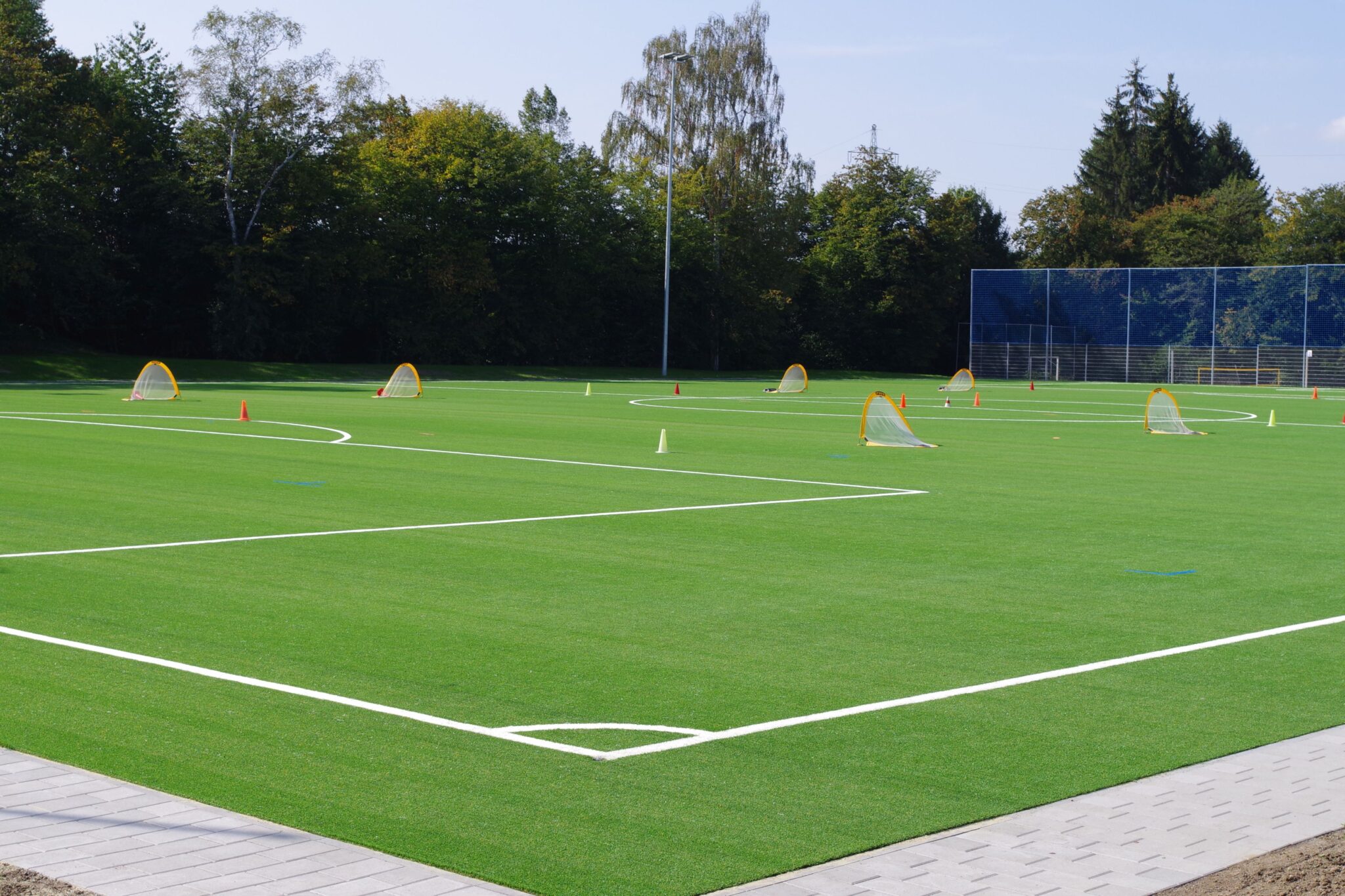
Polytan: But that wasn’t the end of cost-related matters.
Polytan: How has TSV Betzingen covered the costs?
Jörg Steinegger: The city of Reutlingen contributed more than half of the costs towards the renovation, with further contributions from the State Sports Association in Württemberg. The remaining costs totalling EUR 160,000 were borne by us as a club, whereby we had to persuade our municipal council a great deal; we had to prove that maintaining a synthetic turf is cheaper than a natural turf, even if the initial investment is, of course, much higher. And it goes without saying that we didn’t want to compromise on the quality of our new synthetic turf pitch. But in the long run, our cost savings are significant: We don’t need to mow or water, which is not insignificant given the dry periods we are currently experiencing and will probably experience more frequently in the future. And a mower also needs to be moved, refuelled and kept in good shape. Even our electric robotic mower, which we purchased in the meantime, occasionally has its quirks that need to be repaired. And the electricity required isn’t free either.
Polytan: Why did you choose Polytan LigaTurf Motion?
Jörg Steinegger: The LigaTurf Motion does not require infill granules – the turf was filled with approx. 15 kg/m2 sand to secure it on the elastic layer – and therefore offers our Betzingen-based players the full footballing experience. This came at just the right time for us since the production of granule-filled surfaces was coming to an end, yet we urgently needed an alternative. In this regard, Peter Eberhardt was able to advise us on future product developments from Polytan – this was particularly fortunate since it meant that we were able to get the next generation of synthetic turf, and by extension a piece of the future. Quite apart from environmental discussions, it gives us a good feeling knowing that we have done the right thing ecologically and are offering our young athletes a sustainable solution that is as safe as it is environmentally friendly.
Polytan: Polytan’s product development continues steadily, and since the artificial turf installation in Betzingen, there have been three major innovations: bio-based plastics make the floors more ecological, and recycled plastics also ensure greater sustainability. A comprehensive recycling concept has just been launched, with the foundation of FormaTurf, a company under the same umbrella as Polytan – the Sport Group. As such, old synthetic surfaces can now be completely recycled. Are you still following the latest developments?
Jörg Steinegger: Absolutely – the topic of recycling is very interesting. One argument against synthetic turf is still the issue of disposal. If that can be resolved, it would be ideal for me as a supporter and would represent a big step forward in favour of synthetic turf. Of course, correctly maintaining a synthetic turf alone greatly increases its lifespan, which I can highly recommend to every operator. We have also benefitted from Polytan’s advice in this regard. The biggest mistake is to completely forego regular maintenance; with granules, for example, regular weeding is necessary, and organic matter such as leaves and grass must be removed. We receive a maintenance subsidy from the city of Reutlingen because we save money the other way round – on mowing, for example – and we use a Polytan maintenance machine.
Polytan: You have already mentioned one of the benefits of synthetic turf systems: the ability to play on the pitch at all times. What does that mean specifically for TSV Betzingen?
Jörg Steinegger: The pitch is played on continuously from Monday to Friday, from about 4pm to about 9pm. And then there are the weekends. We have noticed that youth teams no longer have any problems at all with not only training on synthetic turf, but playing on such a pitch too. However, among the older players, prejudices against synthetic turf pitches persist to some extent, at least as far as playing is concerned, while training is not a problem for them. For me as a coach, another benefit of synthetic turf is that it suits modern football with its fast and flat short passing game.
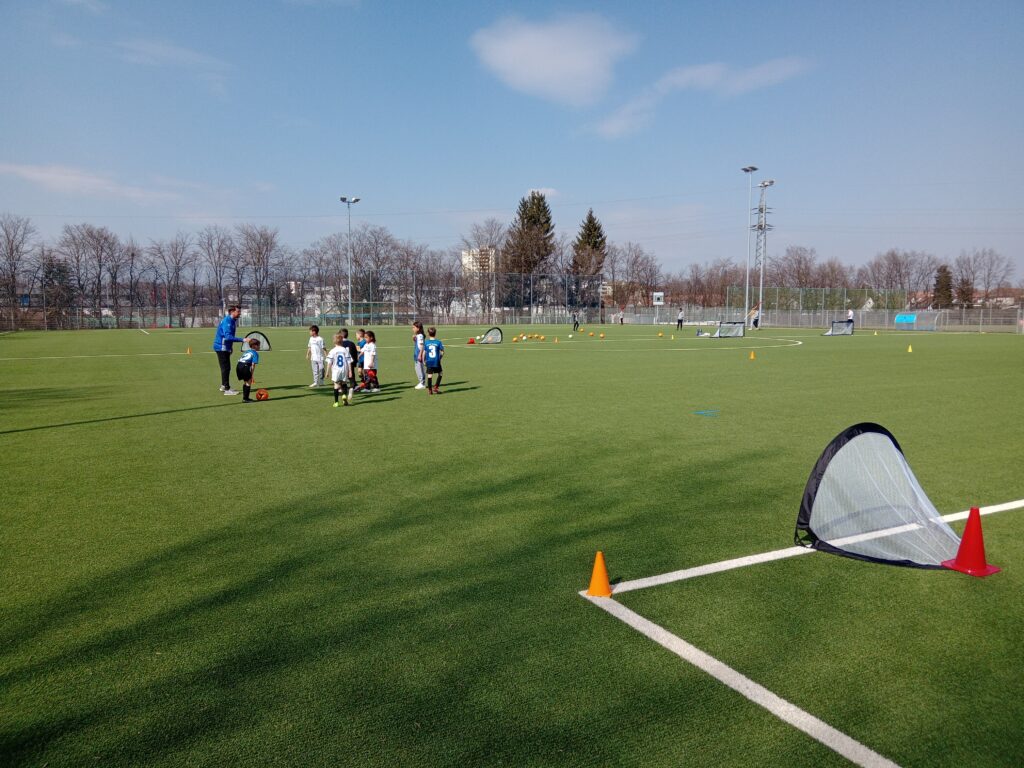
Polytan: So there is a great deal of support for synthetic turf in Betzingen…
Jörg Steinegger: Definitely from me, and also for Polytan since the company uses the TSV pitches as a reference for their customers. And I always take the opportunity to bounce ideas around with Peter Eberhard.
Polytan: Relating to the latest building in Betzingen that is still in planning, for example?
Jörg Steinegger: Correct. It’s an open-air sports hall with a multifunctional angle. We’re planning an open-air sports hall, which to my mind, offers a true economic alternative to a classically constructed sports hall since it is not only expensive to build, but also to maintain. Just in terms of heating costs alone. This cost doesn’t apply to an open-air sports hall and, incidentally, doesn’t detract from our enjoyment of the game in any way. Even when the weather is cooler, players are constantly moving and therefore stay sufficiently warm. In contrast, heated sports halls will sooner or later become a luxury that clubs, cities and municipalities can no longer afford. This results in immense costs… We need to rethink the matter urgently, not least in view of the looming energy crisis. Another benefit for us in Betzingen is the flexible size of such facilities, thereby allowing us to best utilise any space capacities that are still available. Of course, one of the central questions here also revolves around the surface We are currently considering the Polytan LigaGrass Synergy surface. But we still have to convince people that we want to offer real multifunctionality here. After all, this is exactly where I see the future of sports clubs such as TSV Betzingen – in terms of acceptance by members and the economic viability of use by clubs and operators.
Polytan: Mr Steinegger, thank you very much for giving us such detailed responses. We will keep our fingers crossed that TSV Betzingen enjoys a bright future, and are of course excited about the new outdoor sports hall.
